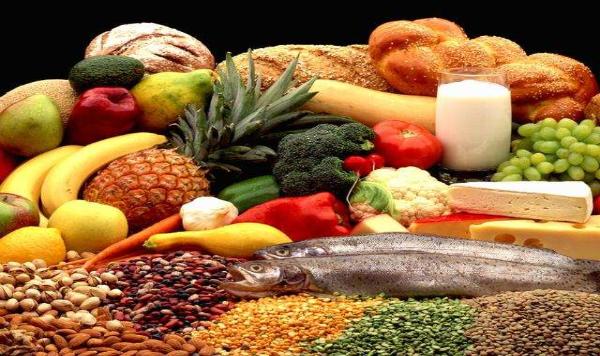
Sure, you want to eat better, and maybe that’s your new year’s resolution. But be very, very careful when shopping, as labels like “natural” and “low fat” don’t always mean something is good for you. While that’s become (somewhat) common sense, it seems like crappy foods are finding more and more ways to sneak into our grocery carts. Fitbie came up with a list of 16 foods that are significantly worse for you than they sound at first glance, and a few of them may really surprise you!
Before you swap sugar for agave syrup or believe the “corn sugar” commercials, do your research. Fitbie says:
It was sweet to be a “natural” sugar this year. Natural sweeteners now rank second on the list of most-looked-for items on the ingredient label, after the type of fat/oil. But “to the body, sugar is sugar, whether it’s in the form of honey, agave nectar, evaporated cane juice, fruit juice concentrate, molasses, or whatever,” says Robert Davis, PhD, author ofCoffee Is Good for You: From Vitamin C and Organic Foods to Low-Carb and Detox Diets, the Truth about Diet and Nutrition Claims. Though these alternatives may sound healthier than regular sugar, there’s scant evidence that our gut processes them any differently.
They also go on to explain that store-bought honey isn’t even really technically honey! (UPDATE: One of our commenters pointed out below that NPR debunked the honey-isn’t-honey rumor. Whew!) Yet another reason to frequent your local farmer’s markets instead of Shop Rite!
Then there’s yogurt. As Fitbie points out, just because it’s “Greek yogurt” (or fat-free yogurt!) doesn’t mean it’s actually good for you:
While plain, low-fat Greek yogurt is a nutritional powerhouse, some of the flavored options pack more sugar per ounce than soda (about 39 g per 12-ounce can) and ice cream (about 24 g for 4 ounces). Ouch. The worst offenders (for a 5.3 ounce portion): Fage Total 2% With Honey at 29 g, Cabot 2% Strawberry at 24 g, Dannon 0% Honey and Chobani Blueberry Nonfat, each with 20 g.
This is a really important one to watch. My dad is diabetic, and he and I have had this discussion about yogurts before. Even if you aren’t super sensitive to sugars it’s a good reminder to always check the label. Incidentally, plain Greek yogurt makes an awesome replacement for sour cream. Just don’t drop the flavored kind in your chili.
As I said above, most of the Fitbie tips are common knowledge. But it’s easy to get suckered by a label, especially if you’re rushed or hungry. Whether you use an app like Fooducate or just pay close attention to the packaging, it’s more than worthwhile to take the extra time and know what you’re about to eat!

Sounds like the “corn sugar” people are spending more money. Don’t forget that the different sugars have different glycemic indexes, which does cause your body to respond in different ways. However, this doesn’t mean you should be going to town on ANY kind of sugar, but the whole sugar is sugar argument is not exactly correct.
True. I think the point though is less “sugar is sugar” and more “just because it’s special sugar doesn’t make it not sugar”. Or at least that’s how I interpreted it. Basically that giving up chemicals masquerading as maple syrup is good, but that doesn’t mean you can dump a bottle of the real stuff (or agave nectar, or anything else) in your food and think you got a “get out of sugar consequences free” card.
That was my read as well – my brother is a big fan of Greek yougurt, and it is tasty but when I looked at the back … well, I switched back … 😉
I have one word… Stevia.
Sent from my iPad
Regarding the honey not being “real honey”: that was debunked weeks ago.
http://www.npr.org/blogs/thesalt/2011/11/25/142659547/relax-folks-it-really-is-honey-after-all
Oh wow, I did not realize that…it figures that food blogs would go nuts over the “HONEY ISN’T HONEY” thing and then totally ignore the debunking…
I will update in a few with that link, thank you!
No problem! The only reason I even remembered it is because the blog that linked to it (Consumerist) usually just “disappears” posts instead of making corrections to them or putting up a later counter-post. I can’t stand it when blogs try to sweep things under the rug!
I know! Especially when it’s a mistake or information about food…kind of an important one to track!
I *hate* that as a general rule – we are ALL wrong from time to time, so just own up to it and move on. Getting things correct seems undervalued in our 24/7 news cycle …
What makes it especially funny is that, once you have something like Google Reader/cache in the mix, pulling a post is a futile gesture…
I married a food scientist. I don’t get mushy e-cards, but thoughtful links to food and health-related journals and studies from her. 😉 We talk about this sort of thing on a daily basis because, well because we’re science geeks.
“Natural” is all well and good, but natural doesn’t necessarily mean “safe”, as Carly alludes to in her text. Marketing and dubious “food/health gurus” have hyped the concept of the de facto superiority of natural over artificial to gullible and sometimes desperate people to the point where “natural” always equals “good”.
All things in moderation is my mantra. Except cilantro, which tastes soapy to me. 😛
Hate hate hate cilantro. Just saying.
Written with Siri
I love cilantro. Yummy.
I remember reading somewhere that cilantro is a love it/hate it flavor…some people just can’t stand it and others love it. We put it in everything.
We love cilantro, too. 😉
mmmm … makes me look forward to Lisa’s homemade salsa we’re having on Christmas eve … 🙂